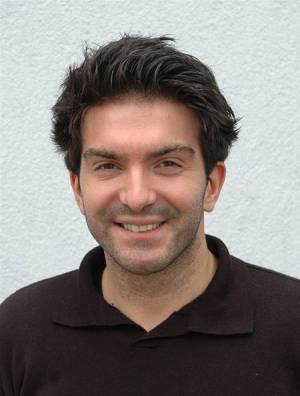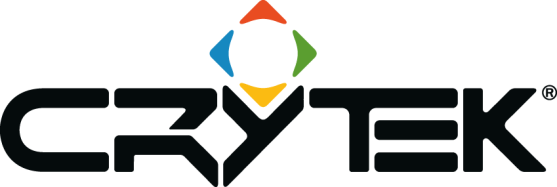Check out more from this interview: Crytek going fully free-to-play in 2 to 5 years and Homefront is Cevat Yerli’s dream game.
On the Friday after the THQ auction, Vigil Games shut down for good. The Monday after that? The core members of that developer announced they were now Crytek USA.
I wanted to find out how this happened, so I ignored the boundaries of time zones and got Crytek chief executive officer Cevat Yerli in Germany on the phone along with Crytek USA’s newly appointed chief executive officer, David Adams in Austin. The pair explained what it was like to establish a new developer over just a one or two meetings.
If you aren’t aware of the specifics, on Jan. 23, the Bankruptcy Court of the District of Delaware held an auction to sell off pieces of publisher THQ to the highest bidders. Darksiders developer Vigil games received no bids and by Jan. 25, THQ shut down the studio and let everyone go. Then, on Jan. 28, Crytek announced that former Vigil lead David Adams would run Crytek USA Corp. as CEO and would bring on the core members of his team from that now-shuttered studio.
How did Crytek USA happen?
“We were surprised when nobody bid on Vigil,” Yerli told GamesBeat. “We would have liked to have bid, but there were too many unknowns.”
 Through the THQ bidding process, Crytek was most concerned with nailing down the rights to the Homefront franchise, which it’s developing at its U.K. studio.
Through the THQ bidding process, Crytek was most concerned with nailing down the rights to the Homefront franchise, which it’s developing at its U.K. studio.
“But when nobody bid [on Vigil], I thought that maybe we could reconsider bidding,” said Yerli. “But eventually we decided not to because the projects [the developer was working on] weren’t strategically fit for us, but I really liked David [when I talked to him] on the phone. He made a very good impression on me as someone who really cared, someone who is really passionate about what he does, and someone who is passionate about the team he works with.”
Yerli decided to fly out to Austin to talk with Adams and possibly to visit the studio sometime during the week of Jan. 28 to have a closer look. Crytek had already begun planning to start a U.S. Crytek corporation, and the executive thought that maybe the Vigil team could work. But THQ laid off everyone at Vigil before Yerli left.
“We had chosen Austin as the destination for [our U.S. branch], and we needed a lean and core team of expert to run the studio,” said Yerli. “At the same time, we didn’t want to continue with Darksiders 3, since that doesn’t fit with our strategy. So when I heard that [THQ laid off everyone at Vigil], I decided on Saturday morning to fly out to meet with them to see if the team would be interested to join our mission, which is significantly different than what this team has done before.”
At this point, Yerli told me that he based his decision to act quickly on his conversations with Adams and his time with the Darksiders games. Yerli hasn’t finished Darksiders II, but he likes what he’s played so far. Yet at this point, Yerli still isn’t sure if the former Vigil team is right for Crytek USA. The CEO hasn’t seen a single résumé or held an interview with anyone.
Meanwhile, in Austin, the employees of Vigil were trying to figure what to do next. Adams had talked with Yerli on Thursday but wasn’t sure what would come of it. He was also preoccupied with a studio crumbling all around him.
“It was an interesting time,” Adams told GamesBeat. “I was telling everyone that [Friday] was their last day. I was pretty busy trying to help people find jobs. Sure, Crytek was gonna come out the following week, and that was cool. It sounded like a good opportunity, but my mind was really focused on finding people a place to land.”
Then at 8 p.m. Friday, the day Vigil shut down for good, Cevat Yerli’s brother Avni called Adams to tell him that Cevat was getting on a plane to Austin as soon as possible.
“He came out the next day,” said Adams. “We met, and the day after we were pulling a new studio together called Crytek USA.”
But how does something like this happen so fast?
“This is probably the fastest establishment ever [for a new studio],” Yerli told GamesBeat through a laugh. “I don’t think you could establish a studio faster than this. Only a few people within Crytek even knew this was happening because we didn’t have time to update people. So it was a surprise for a lot of people within Crytek.”
Yerli is right. On Jan. 25, Vigil dissolved. On Jan. 28, Crytek announced Crytek USA. That is a busy weekend. I’m lucky if I remember to do the laundry in a similar time frame.
“I was in Delaware for the auction,” Adams said. “I was front row for the entire preceding. I had to come in the next day and tell everybody, and then from there it was this whirlwind into Crytek USA.”
So I asked Yerli what gave him the confidence to move so boldly in this situation.
“I met with David and some of his former colleagues and his dear friends,” said Yerli. “I shared with them, before meeting the other team members, how I see the world. I told them what we want to do and where we want to go [with Crytek]. But I also wanted to get to know them. I wanted to know them as humans, as team members, and as friends. And within a short amount of time I got very comfortable with David and his friends.”
Yerli said he wasn’t worried about discovering the developers’ technical or creative abilities because he believes that the Darksiders games speak for themselves.
“My point is, I saw a history of games that spoke to the team’s capabilities,” said Yerli. “I saw, from a corporate-culture perspective, a very fit core team, and I saw a strong leader in front of me.”
But that was just a small get together with Adams and some lead developers from Vigil. Before meeting with the other dozen former Vigil employees that Adams was thinking of inviting to Crytek USA, Yerli knew how he would decide whether or not to go through with this initiative.



